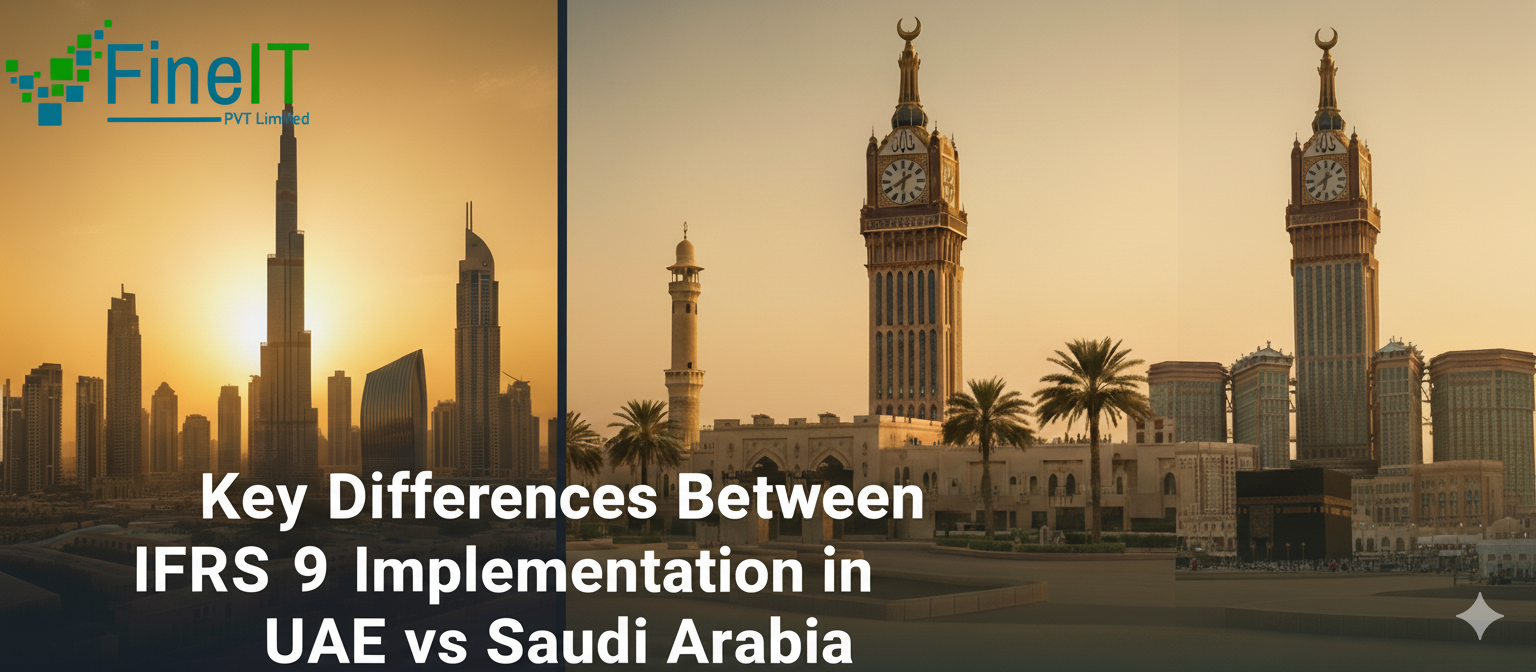The implementation of IFRS 9 Financial Instruments has fundamentally changed how financial institutions in the Gulf Cooperation Council (GCC) approach credit risk, particularly through the Expected Credit Loss (ECL) model. While both the United Arab Emirates (UAE) and the Kingdom of Saudi Arabia (KSA) have adopted IFRS 9, key differences in regulatory emphasis and transitional measures exist, primarily driven by their respective central banks.
1. Regulatory Emphasis and Focus
The central banks of both nations have played a critical role in guiding their banking sectors, but their specific priorities diverge slightly:
| Feature | UAE (Central Bank of the UAE – CBUAE) | Saudi Arabia (Saudi Central Bank – SAMA) |
| Primary Regulatory Focus | Model validation, governance, and data quality. CBUAE emphasizes the robustness and independence of the ECL models and ensuring consistency across banks. | Conservative provisioning and stress testing. SAMA focuses on ensuring provisioning is sufficiently prudent, particularly for retail and Small- and Medium-sized Enterprise (SME) portfolios. |
| Key Directives | Issued circulars on periodic stress testing, provisioning adequacy, and ECL disclosures to ensure transparency. | Issued detailed implementation guidelines and conducted extensive impact assessments, often emphasizing a more conservative interpretation of the ECL requirements. |
| Model Sophistication | Larger UAE banks are noted for being early adopters of advanced analytics and machine learning for ECL modeling, driven by a highly competitive and international financial sector. | SAMA has strong expectations regarding model risk and staging criteria application, often requiring thorough documentation and justification for models. |
2. Transitional Arrangements and Capital Relief
One of the most notable differences lies in the regulatory treatment of the transitional impact on banks’ capital:
- UAE’s Prudential Filter: The CBUAE recognized that the immediate shift to the forward-looking ECL model could lead to higher, more volatile provisions, which would negatively impact regulatory capital. To mitigate this “cliff effect,” the CBUAE introduced a “prudential filter” through transitional arrangements. This mechanism allowed banks to smooth the impact of the increase in ECL provisions on regulatory capital over a transitional period (initially set at five years), ensuring that IFRS 9 implementation did not unduly constrain lending or financial stability.
- Saudi Arabia’s Approach: While also concerned with capital impact, SAMA’s approach focused more on direct supervision and encouraging a conservative, yet consistent, build-up of provisions. Although specific transitional capital relief measures were also made available in KSA, the regulatory tone often leaned more towards immediate, fully-reflective provisioning, particularly in the context of specific portfolio risks.
3. Adaptation for Islamic Finance
Both countries have significant Islamic banking sectors, which presents unique challenges for IFRS 9 due to the prohibition of Riba (interest) and the use of profit-sharing contracts (like Murabaha or Ijara).
- Common Challenge: The IFRS 9 requirement that cash flows must represent Solely Payments of Principal and Interest (SPPI) for a financial asset to be measured at Amortized Cost is a common hurdle. In both the UAE and KSA, Islamic institutions must work closely with Shari’ah boards and regulators to determine the appropriate classification of their contracts (e.g., classifying a Murabaha receivable as a debt-like instrument for IFRS 9 purposes).
- Local Guidance: Both CBUAE and SAMA have offered guidance to help their respective Islamic banks navigate the technical adaptations required for classification, measurement, and ECL calculation, ensuring compliance with both IFRS 9 and Shari’ah principles.
Conclusion
In essence, while the technical requirements of IFRS 9’s ECL model are universally applied in both the UAE and KSA, the key difference lies in the central bank’s regulatory overlay.
The IFRS 9 in the UAE generally adopted a more phased approach to managing capital impact through a prudential filter, coupled with a strong emphasis on advanced model governance and data quality. Saudi Arabia (KSA), on the other hand, placed a strong regulatory focus on conservative provisioning and stress testing, driving banks toward greater prudence in their credit risk estimations, particularly within the domestic market. These country-specific variations reflect the distinct regulatory philosophies and risk profiles of the two largest financial hubs in the GCC.
At FineIT, we specialize in helping financial institutions across the UAE and Saudi Arabia (KSA) implement and optimize IFRS 9 frameworks aligned with local regulatory expectations. From ECL model development and validation to governance, data integration, and regulatory reporting, our expert team ensures your institution achieves both compliance and performance efficiency.
Partner with FineIT to strengthen your IFRS 9 processes, enhance model accuracy, and maintain full alignment with CBUAE and SAMA standards.
Contact us today to learn how FineIT can help your organization confidently navigate the evolving IFRS 9 landscape in the GCC.



